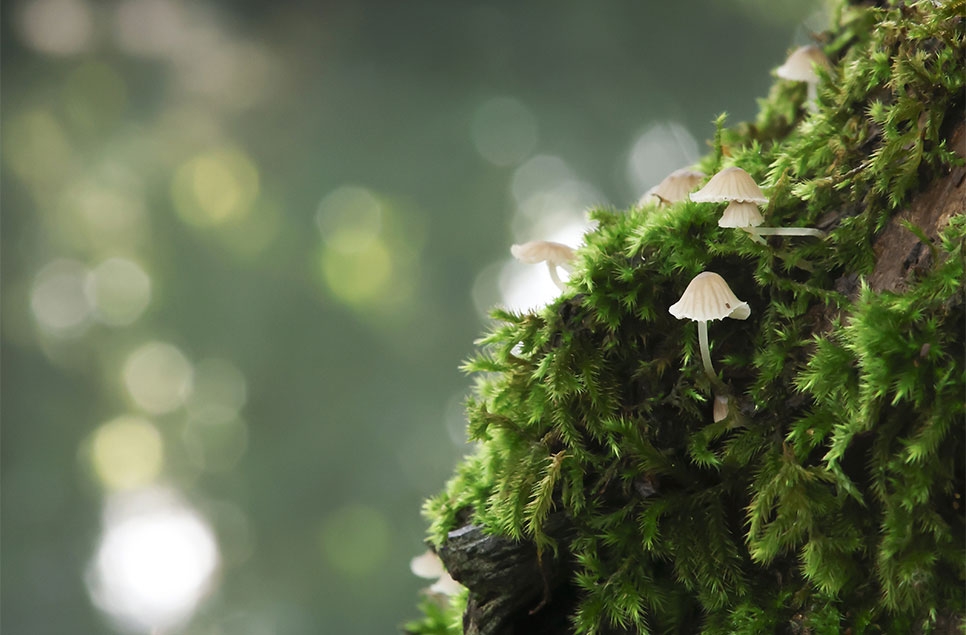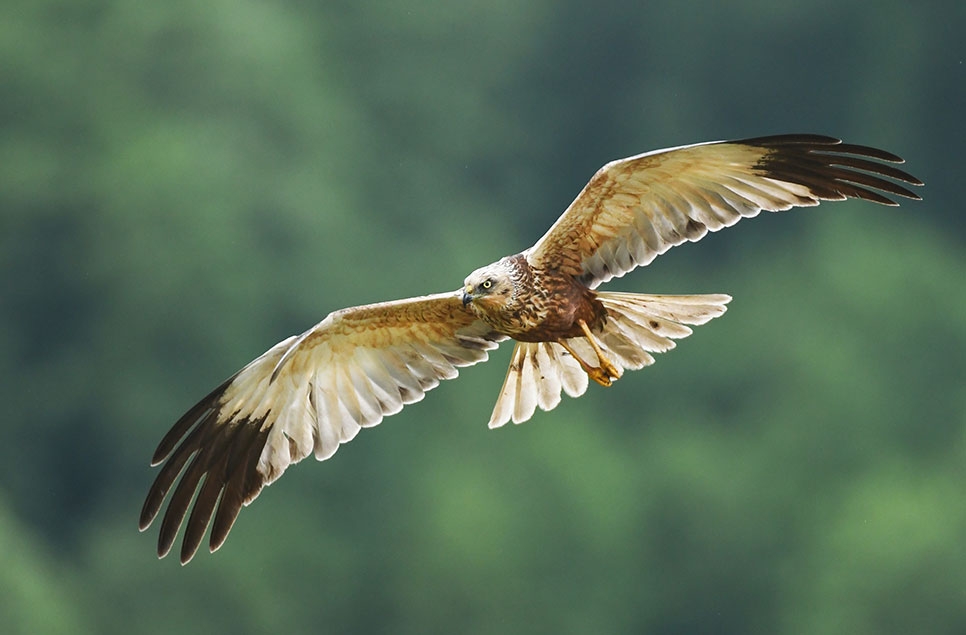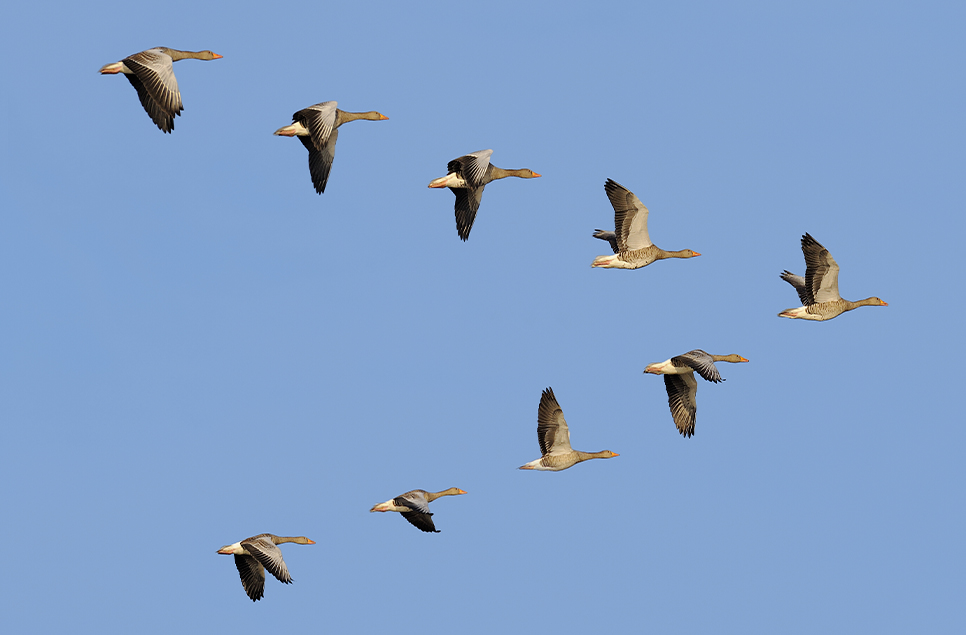Everything you ever wanted to know about bats (but were afraid to ask!)
Ever wondered what bats eat, whether they hibernate, or how to spot one flitting through the night sky? You're not alone! Bats are some of the UK’s most fascinating and misunderstood wildlife, and there's so much to discover about these nighttime insect-hunters.
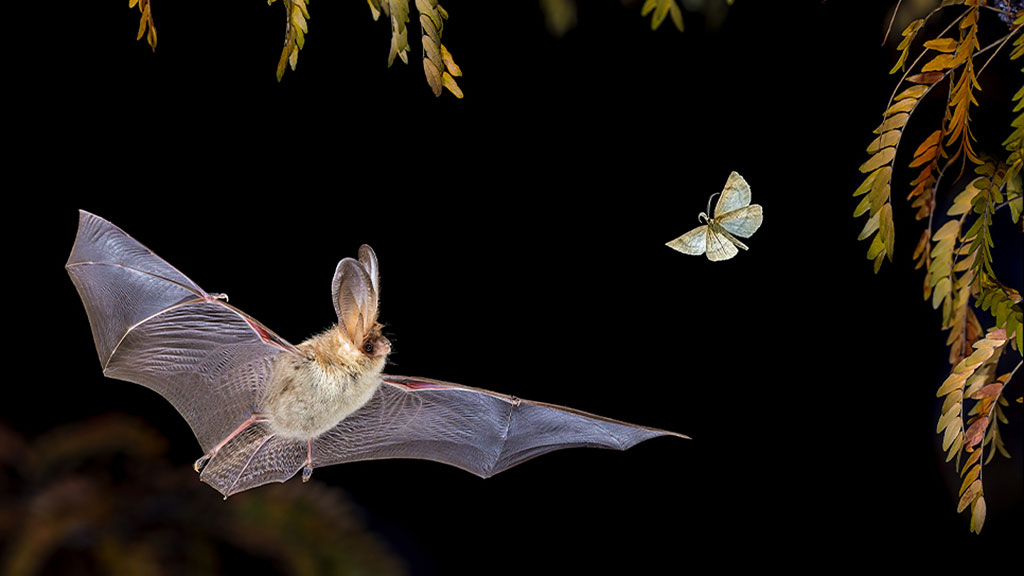
In this special Q&A, WWT’s resident bat expert, Magda Howitt shares her insights on everything from where and when to see bats, to the species you might spot at WWT centres, and what you can do at home to help support these incredible creatures.
Whether you’re a curious beginner or a lifelong bat fan, there’s something here for everyone. Let’s dive in and shine a light on the mysterious world of bats!
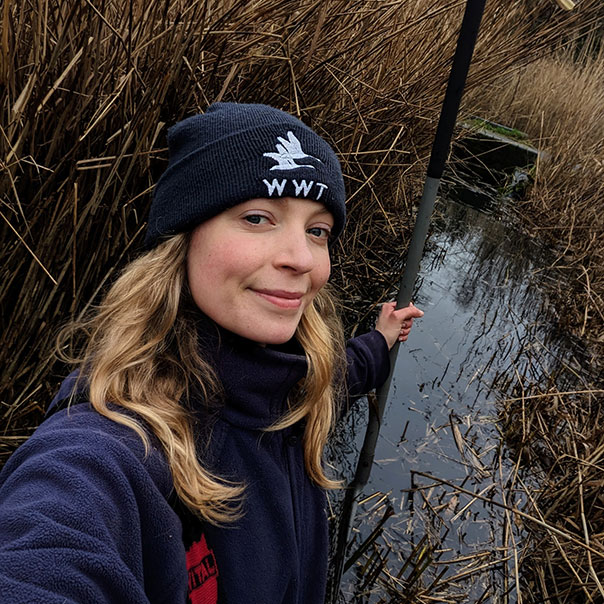
Magda, how did you first get interested in bats?
I first fell in love with bats back in 2018, when I joined London Wetland Centre’s long-term bat monitoring transect. This was the first time I heard a bat call through a bat detector and I was hooked. I remember standing in the twilight, when suddenly the silence was filled with rapid-fire clicks and a hidden world was revealed. Fast forward to today, and I’ve been lucky enough to share what we’ve discovered with audiences at the BIAZA Conservation Conference 2024, WWT’s Reserve and Living Collections meetings and even the British Bat Symposium 2025. Who knew a night-time walk with a bat detector could change your life?
Which is your favourite bat species and why?
This is such a tough question, as I have three! But my most favourite is the soprano pipistrelle.
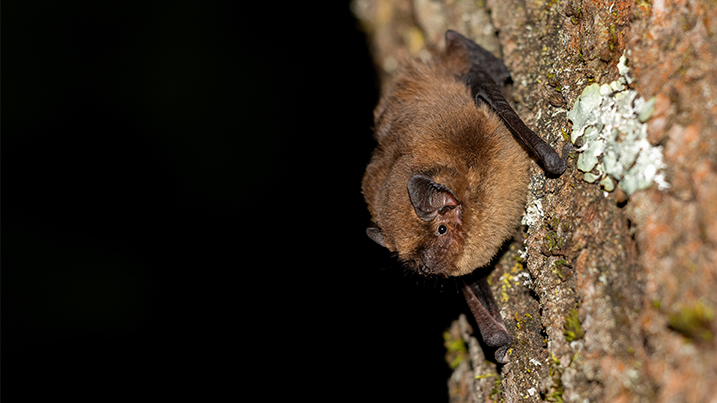 Soprano pipistrelle
Soprano pipistrelle
They’re tiny. In fact, they’re among the smallest bats in the UK, with a head and body length of just 3.5 to 4.5 cm and weighing in at only 3 to 8 grams. They’re so small that an adult can fit into a matchbox. And as their name suggests their calls are at a higher frequency than those of the common pipistrelle and are best heard at an impressive 55khz. And like me, they love water. Wetlands are their hunting grounds, and they do almost all of their foraging at night.
My next favourite is the nathusius pipistrelle. Why? Because despite being so small (just 5 to 8 grams which is about the weight of a £1 coin) these bats are epic travellers. They migrate up to 2,000 km across Europe. One even made the journey from Bedfont Lakes in London, near to where I live, all the way to Russia. As someone who’s half Polish and grew up in Hounslow, this bat feels like a kindred spirit.
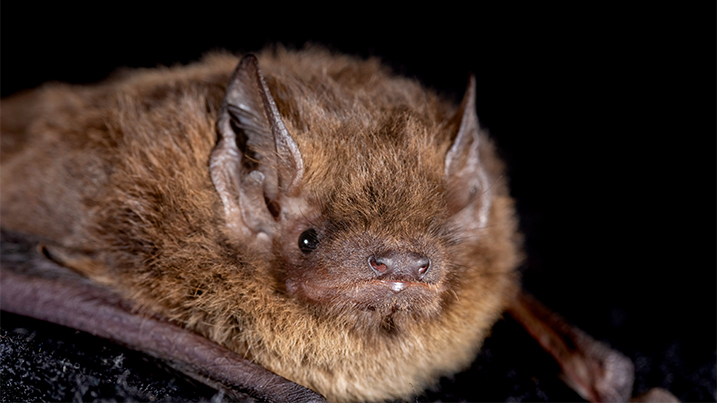 Nathusius pipistrelle
Nathusius pipistrelle
And then there are the big bats. I used to love the noctule the most – their calls are deep and can be picked up at 20 kHz. But then I met the leisler. Their calls are just a little more off beat, usually around 25kHz, which makes them stand out.
How long have you been monitoring bats and what have you learnt along the way?
I’ve been monitoring bats for 7 years now, and the more time I spend with them, the more they surprise me. Just when you think you know them, they have something new to teach you about their complex worlds. That’s what I love about the bat community too. Bat conservationists have to be among some of the most welcoming people, always ready to share knowledge with newcomers.
Since 2023, I’ve been an active member of the London Bat Group which has been a brilliant learning space. But where I grew most was as a Seasonal Bat Advisor for the Bat Conservation Trust in 2020. Their Helpline Team deals with every kind of bat question imaginable, and they play a vital role in saving wild bats and empowering the public to do the same.
What’s the most unusual bat fact you have?
Where do I start? One of my favourites is that bats have one of the most complex ‘language’ systems in the animal kingdom. With a bat detector you don’t just hear hunting calls, but also the chatter of social calls - squeaks, buzzes and trills that each carry meaning.
And here’s another wild one: the only mammals in the world with suction caps are bats! The spix’s disk-winged bat (Thyroptera tricolor), found in South America, has little suction disks on its thumbs and back feet that let it cling to smooth surfaces. This means they can sleep facing upwards, breaking the bat stereotype of always hanging upside down. Bats break all the rules.
How many bat species are there in the UK and which am I most likely to see?
We’re lucky to have 17 breeding bat species in the UK. There’s also the greater mouse eared bat which is the rarest and no longer considered a resident breeding species.
The most common bats are pipistrelles. If you’ve seen little dark shapes zipping about your garden at dusk, chances are they’re pipistrelles. They’re found throughout the UK, whereas others, like horseshoe bats prefer the warmer south. At WWT sites you’re most likely to meet the water hunting Daubenton’s and of course, the water-loving soprano pipistrelle!
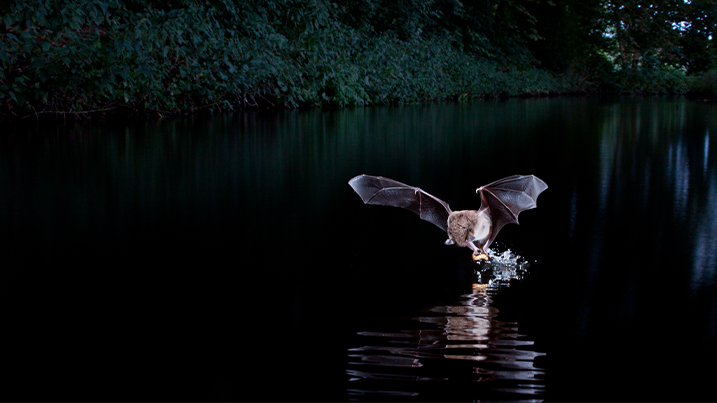 Daubenton’s
Daubenton’s
Are bats blind and how do they see at night to hunt?
The old saying ‘blind as a bat’ couldn’t be further from the truth. Bats actually have really good eyesight, but they also use echolocation to help them hunt in the dark. Just like the sonar in a submarine, they sound out bursts of sound and listen for it as it bounces off the surface of their surroundings. This lets them navigate even tight spaces like woodland canopies and is a great way for them to find their food in the dark.
Daubenton's bats can shout at volumes 50 times louder than the legal decibel limit of a nightclub! Fortunately for us they shout at a frequency undetectable to our ears, which is why we need to use a bat detector to listen to them. If they are that loud, how do they prevent themselves from damaging their hearing? Well, they can use the muscles around their eardrums to shut off their ears each time they shout, then open them again to listen for the echo. Considering some bats are shouting at up to 160 times a second, this is an incredible feat.
What do bats eat and how much do they eat?
All bats eat insects. Some hunt them on the wing, others eat insects off leaves or out of the water. Pipistrelles snatch tiny midges out of the air and can eat up to 3,000 in a night! Larger bats like noctules hunt higher up in the sky taking larger beetles and moths. You’ll see them flying high up above the treelines. Long-eared bats are the stealth ninjas of the bat world. They have such sharp hearing, they can detect an insect crawling on a leaf without echolocating. This process, known as gleaning, means they can locate and capture silent, motionless insects. Daubenton’s bats specialise in skimming insects off the surface of water, using their large tail membrane and hairy feet like fishing nets.
Are bats good or bad to have around?
Bats are brilliant to have around! Not only do they gobble up insects, but they’re also what we call ‘indicator species’. This means their presence tells us a lot about how healthy an ecosystem is. A garden or wetland with bats is a place teeming with life.
Are bats dangerous and can they make you sick?
Bats have a bad reputation in myths, but the truth is: they’re not dangerous if left alone. Like many wild animals, bats can carry diseases (for example, a very small proportion carry rabies-related viruses in the UK). But encounters are incredibly rare. Bat droppings (guano) are not harmful. In fact, they crumble into dust and make brilliant fertiliser. Do bats bite? Only if handled. That’s why only licensed bat workers can pick them up. Respect their space, and bats are safe, fascinating neighbours.
Where do bats live?
Bats are adaptable. Some roost in trees, caves and old buildings, while others squeeze into crevices as thin as a £1 coin. In summer, females gather in maternity roosts to raise their young. In winter, bats hibernate in cool, damp places where the temperature stays steady.
Why do bats sleep upside down?
Bats sleep hanging upside down because it gives them a quick take-off. Unlike birds, they can’t launch from the ground, so they drop into flight. Their feet are specially adapted – they lock automatically when closed, meaning bats can hang effortlessly without using energy. They snooze during the day and wake at dusk to hunt.
When and where do bats hibernate?
Most UK bats hibernate from November to March, depending on the weather. They choose frost-free, quiet spots like caves, tunnels, and old buildings. Sometimes they’ll wake for a sip of water or even a quick feed if insects are flying during a mild winter spell.
Are bats protected by law in the UK?
Yes – all UK bats and their roosts are protected by law under the Wildlife and Countryside Act 1981 and the Conservation of Habitats and Species Regulations 2017. It’s illegal to harm, disturb, or handle bats without a licence. This protection is vital because bat populations declined sharply in the 20th century, and they’re still recovering.
Where can I see bats?
The best time to see bats is at dusk on warm, summer evenings. Look around rivers, lakes and ponds where insects swarm. Gardens, woodlands and even city parks can be great spots. If you’re by a wetland, look for Daubenton’s bats skimming the water like tiny fighter jets, while pipistrelles zig zag overhead.
How do we know which bats are at WWT centres?
To find out which bats we have living at our centres, we use a variety of different methods. One of the simplest is a bat detector which lets us hear their echolocation calls and identify species by their unique frequencies. We also monitor bat boxes during certain times of the year to count the bats and find out their species and what gender they are. Because all bats are protected by law, this is done by licensed bat workers who have the experience and authority to handle bats.
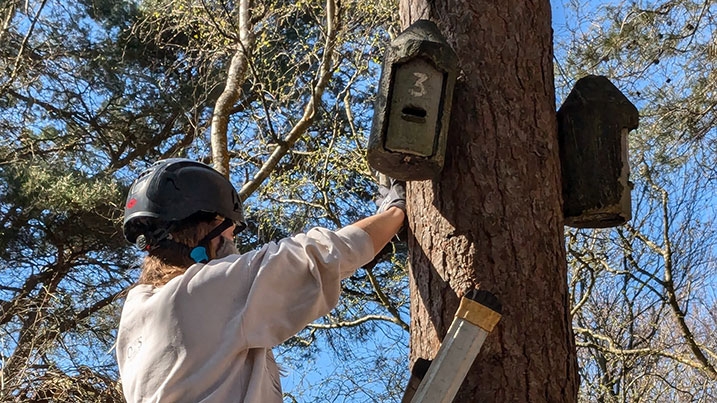 Checking bat boxes under licence with London Bat Group
Checking bat boxes under licence with London Bat Group
Occasionally, we use harp traps which are safe, gentle nets that allow us to temporarily catch bats to identify them, before releasing them unharmed. This helps us understand whether bats are just visiting our sties to feed or also roosting at them too.
How does WWT support bats?
WWT supports bats by protecting and restoring wetland habitats, which provide rich hunting grounds for bats. We campaign nationally to maintain the strongest possible protections for wetlands, something that is critically important at a time when environmental protections are increasingly coming under attack. We also monitor bat activity across our reserves, run public bat walks to inspire new bat enthusiasts, and contribute data to national conservation.
What research does WWT do about bats and what have the studies discovered?
One of our recent studies looked at how bats use farmland ponds along the Somerset coast. We tuned in with detectors at eight different ponds and discovered at least ten species of bats visiting the ponds. Each pond had its own rhythm. On some evenings, one would erupt with hatching insects, while others stayed quiet. Then, the next night, it might be a different pond’s turn. This staggered insect emergence meant it was like a rotating buffet and unsurprisingly the bats followed the action. When insect hatches were high, we picked up more ‘feeding buzzes’ – the tell-tale sound of bats closing in on prey. Interestingly, when swallows were feeding in numbers over a pond, bats were often less active there, suggesting some gentle competition or different preferences. The big takeaway? A mosaic of ponds across a landscape is brilliant for bats. Each one supports different insects at different times, ensuring there’s always a food source available and proving that for bats, wetlands aren’t just a home, they’re a lifeline.
What can I do to help bats and attract them to my garden?
Create a pond
Even a small pond provides a rich source of aquatic insects like dragonflies and midges which are key food for bats and birds. Avoid fish and add shallow edges and native plants.
Let grass grow
Long grass boosts insect life by providing shelter and breeding areas for moths, beetles and other insects. More bugs at dusk mean more snacks for bats.
Plant night scented flowers
Species such as honeysuckle, jasmine and tobacco plants attract moths after dark – perfect bat food. Pale blooms work best in low light.
Turn off outside lights
Bats prefer darkness. Artificial lights can disrupt their hunting behaviour. Hunting moths around lights makes bats easier prey for owls. Use motion-sensor lighting to reduce impact.
Put up a bat box
Popping a bat box up in your garden is a simple way to make a big difference for local wildlife. With natural roosting spots disappearing, these cosy shelters give bats a safe place to rest, raise their young, and gives us the chance to support these brilliant nighttime insect-munchers. The WWT online shop has some great options.
Don’t wait until dark to explore
Our wetland centres are some of the best places to see bats. And for those who love the supernatural but not the spook, visit our wetland centres across the UK this October half term. Get ready for a fun-filled Halloween, bubbling over with enchanting activities that will show you just how ‘super’ wetlands can be. From willow wand making, casting spells and mixing potions, make magical memories with the whole family.
Plan your visit
